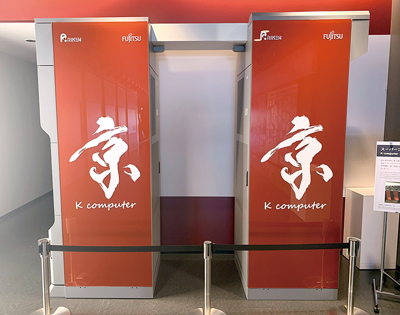

- Home >
- Artifacts of IP Heritage >
- 2019 >
- K computer
K computer

| Period of operation | 2012〜2019 |
|---|---|
| Developed by | RIKEN and Fujitsu |
| Owner | RIKEN |
| Location of historical materials | RIKEN Center for Computational Science (R-CCS) 7-1-26 Minatojima-minami-machi, Chuo-ku, Kobe, Hyogo 650-0047, Japan |
| Visitor information | Open to the public |
| Contact | RIKEN Computational Science Promotion Office Tel.+81-78-940-5800 Email: r-ccs-koho@ml.riken.jp |
The K computer was jointly developed by RIKEN and Fujitsu as the centerpiece of the Innovative High-Performance Computing Infrastructure Project commissioned by the Ministry of Education, Culture, Sports, Science and Technology, and made available for shared use by the public in September 2012. In 2011 the K computer became the first supercomputer in the world to achieve 10 petaflops of performance (ten quadrillion calculations per second), demonstrating Japan's world-leading technology in parallel computing. Scientific projects using the K computer were also highly successful, winning the ACM Gordon Bell Prize, the highest honor in high-performance computing, twice (in 2011 and 2012).
The highly versatile K computer was used in a broad range of research areas, including medicine, natural disaster prevention and mitigation, weather forecasting, space science, manufacturing, and materials development. The K computer was vital not only to academic research, but also to many industrial research and development projects, as evidenced by the cumulative number of users exceeding 11,000 individuals and 200 companies.
The K computer was decommissioned in August 2019 and superseded by the supercomputer Fugaku. Some of the compute racks and other parts of the dismantled K computer have been on display in the first-floor Exhibit Area of the RIKEN Center for Computational Science, and also been donated to a total of 13 science museums and other institutions across Japan for visitors to pay tribute to the computer's legacy.
